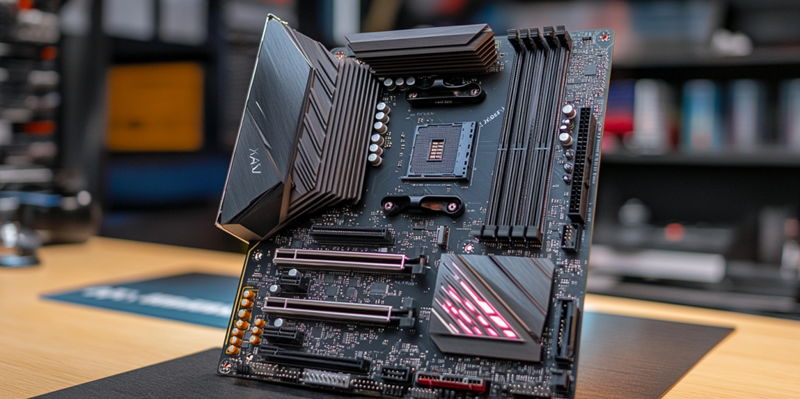In a significant technological development, AMD’s partners have introduced the new X870(E) motherboards, specifically designed to support the company’s latest Zen 5 processors. This rollout signifies a pivotal moment for PC memory performance, especially given the advancements in overclocking technologies that have accompanied these motherboards. One notable highlight is G.Skill’s announcement of a groundbreaking memory kit tailored for AMD builds that features AMD’s Expo one-click overclocking technology. This new memory kit boasts speeds up to DDR5-9000 MT/s with CL44-56-56 timings, marking it as the fastest 48GB kit (24GB x 2) that the company has ever offered.
The strides made by G.Skill in this domain are nothing short of remarkable, especially when compared to their previous highest speed offering for a comparable capacity, which was the DDR5-8000 kit at CL40-48-48 timings. This improvement in speed, albeit with looser timings, showcases a significant leap in frequency capabilities. The memory’s impressive performance was validated through overclocking tests conducted on an Asus X870 Hero motherboard paired with a Ryzen 7 8700G processor, a combination that underscores the newfound potential of AMD’s latest hardware.
Innovations in Overclocking Technology and Hardware
A notable aspect of this success in achieving higher memory speeds is attributed to Asus’s innovative Nitropath DRAM technology. This breakthrough technology employs gold pins that are 39% shorter than standard pins, significantly reducing interference and optimizing signal pathways. The utilization of Nitropath DRAM technology is pivotal for the Trident Z5 Royal Neo, G.Skill’s premium memory line for AMD systems. This enhancement not only signifies a technical triumph but also demonstrates the critical nature of collaborative innovations in the field of PC memory technology.
While G.Skill has yet to announce a specific release date for this advanced memory kit, the broader implications are clear. AMD is steadily closing the gap with Intel in the race to achieve higher memory speeds. Both industry giants are anticipated to support the new CUDIMM memory type, which promises even higher clock speeds and further advancements in memory performance. These developments highlight an ongoing competitive dynamic between AMD and Intel, driving rapid technological progress that will likely yield benefits for end users and DIY PC builders alike.
The Implications for AMD and Intel’s Competition
In a significant technological advance, AMD’s partners have unveiled the new X870(E) motherboards, specifically tailored to support the latest Zen 5 processors. This launch marks a crucial milestone for PC memory performance, particularly in relation to the advancements in overclocking technologies that come with these motherboards. Among the standout announcements is G.Skill’s introduction of a groundbreaking memory kit optimized for AMD builds. This kit features AMD’s Expo one-click overclocking technology and offers speeds up to DDR5-9000 MT/s with CL44-56-56 timings, positioning it as the fastest 48GB kit (24GB x 2) ever released by G.Skill.
The progress made by G.Skill in this area is nothing short of extraordinary, especially when compared to their previous highest speed for a similar capacity, the DDR5-8000 kit at CL40-48-48 timings. The increase in speed, even with slightly looser timings, represents a substantial enhancement in frequency capabilities. This impressive performance was validated through overclocking tests conducted on an Asus X870 Hero motherboard paired with a Ryzen 7 8700G processor. This combination highlights the newfound potential and performance capabilities of AMD’s latest hardware offerings.

